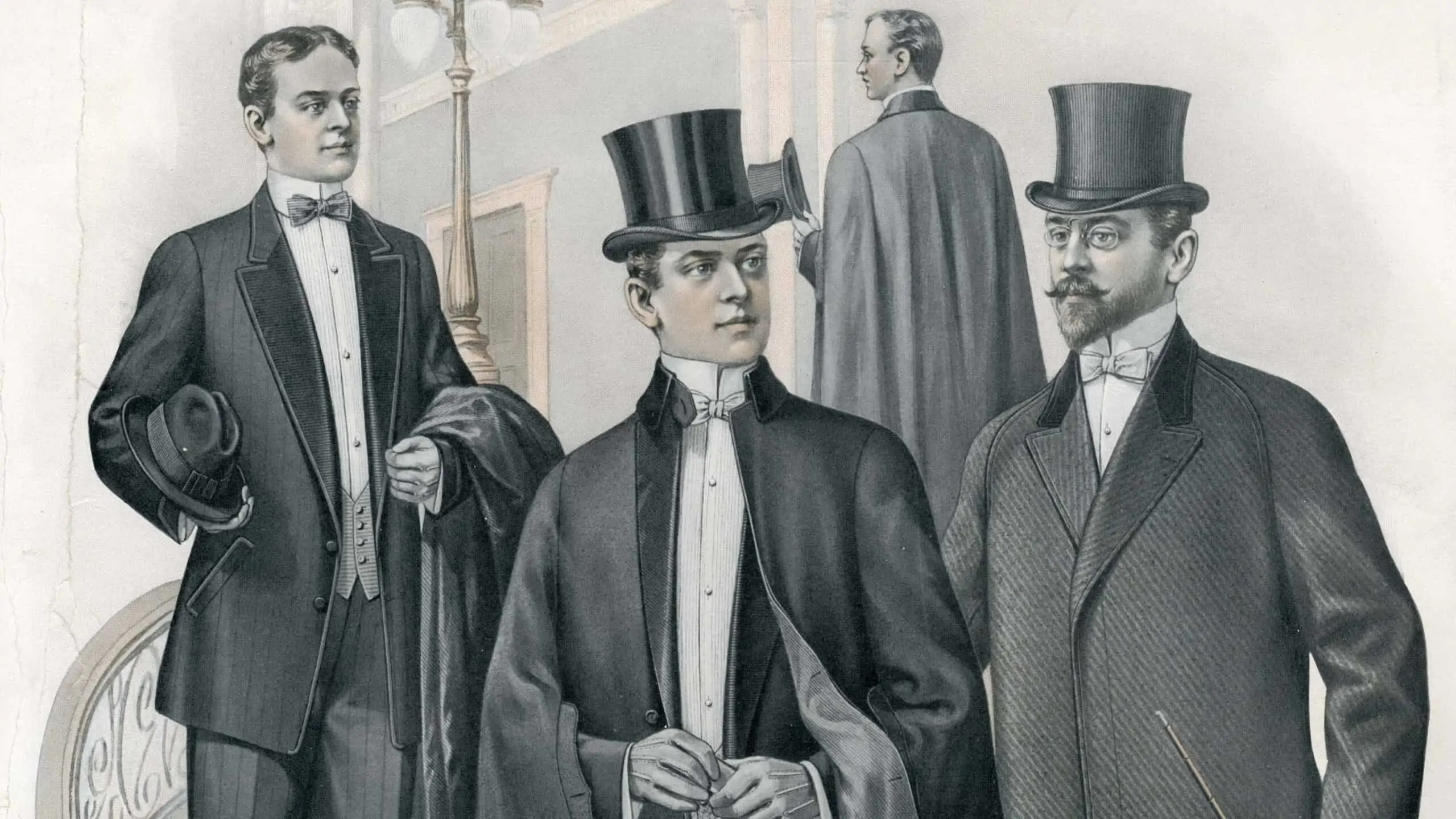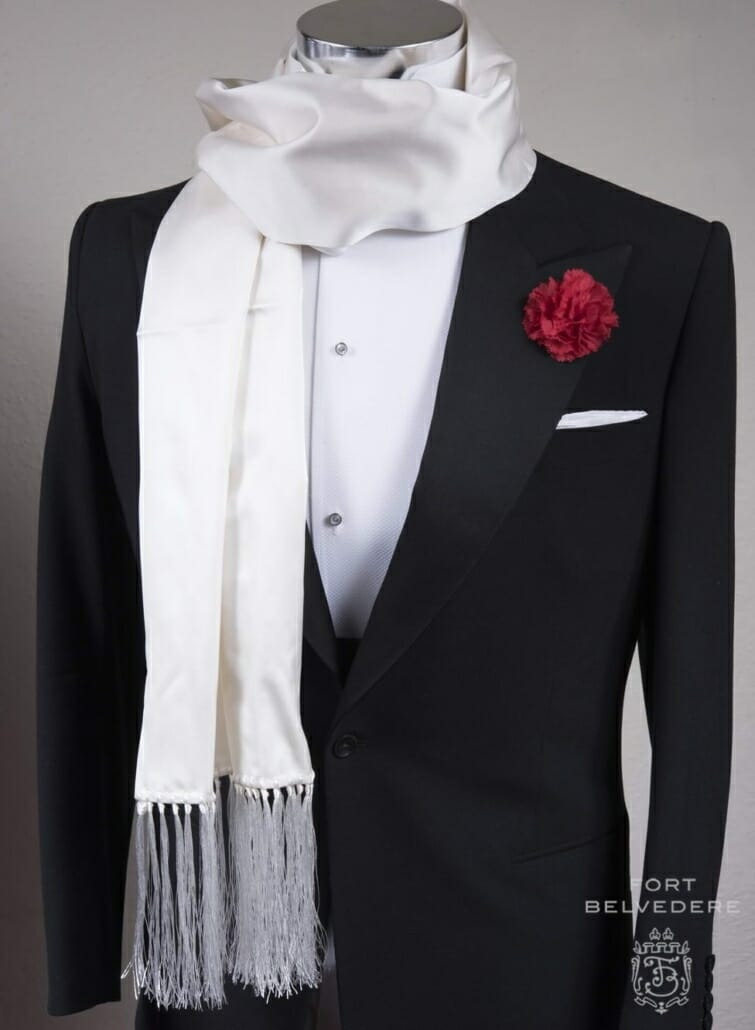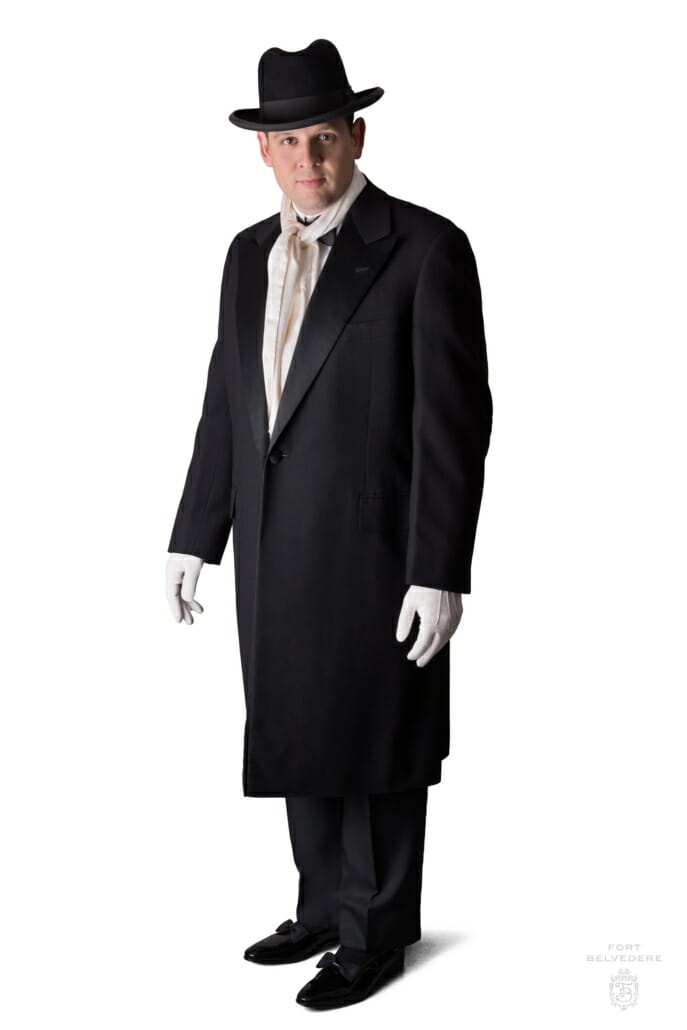
While black-tie outerwear etiquette is more a set of guidelines than hard and fast rules, these traditional accompaniments will ensure that a man’s winter wrappings harmonize with the formal apparel they are covering.
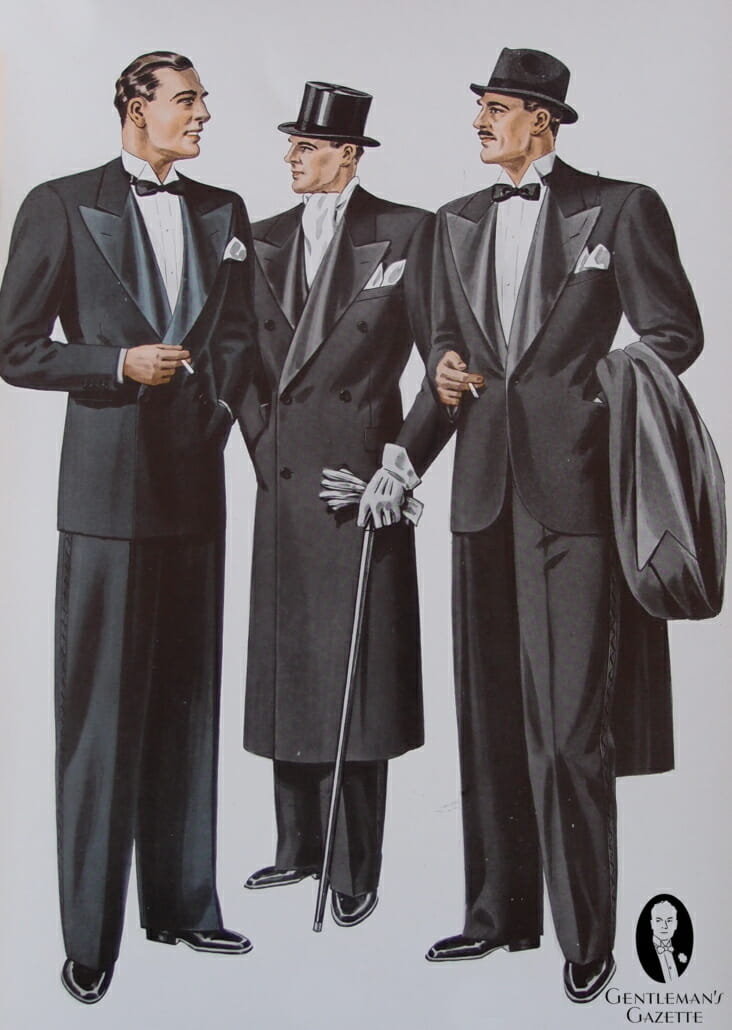
Paletot Overcoat: A Great Evening Option
The most conventional overcoat for daywear that is also used evening dress since the 1930s has been the double-breasted Paletot overcoat. The color should be black, dark blue or oxford gray, the length should be knee length or longer and the model should be double-breasted. A black velvet collar is ideal.
If you attend only a few black tie functions you can get by with using just this overcoat for black tie.
Note that raincoats (a.k.a. trench coats) are not appropriate outerwear for a tuxedo or tailcoat.
Finding the Proper Evening Overcoat
However, if you are a black tie aficionado a proper evening overcoat is in order. 100 years ago the number of evening overcoats in a society would have been a good culture index but unfortunately many men today do not see the need for such a specialized garment. Sometimes men would add a fur or astrakhan collar to a dark DB overcoat. Fortunately, any evening coat can be worn with white tie and black tie, so it is not such a specialized garment after all ;).
Basically, the other options are as follows:
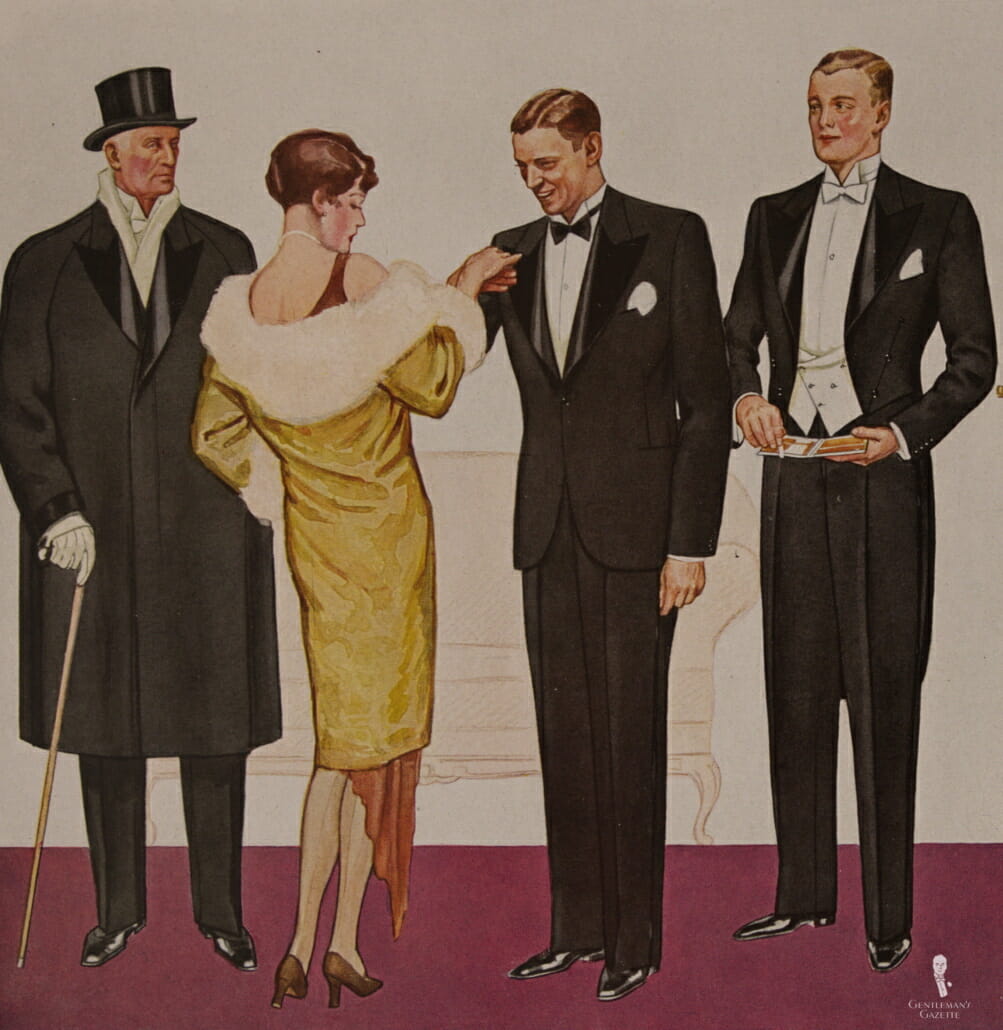
Single Breasted Satin Face Overcoat
Typically black, single-breasted or better yet, single button with peaked lapels that are silk faced just like a tuxedo. Obviously, the lapel silk facings make it truly an evening only garment. It can be cut more roomy and is typically lined with silk throughout.
The one in the illustration above has raglan sleeves and silk faced turnback cuffs. The one showing Sven Raphael Schneider at the top of the section is black with regular sleeves, a double button, and is completely silk lined and faced. It is a vintage bespoke piece that was made in Germany in the 1950s.
Evening Cloak or Cape: Dated Dressing
The last time evening cloaks were a going concern was in the 1960s when advocates of Austin Powers style menswear argued they were no longer exclusive to white tie and could, therefore, be worn with tuxedos. While most of them are lined in black silk, sometimes you can also see them lined with white silk which makes for a very dramatic statement. Of course, a white lining is highly impractical and thus not recommend for frequent black tie event attendees.
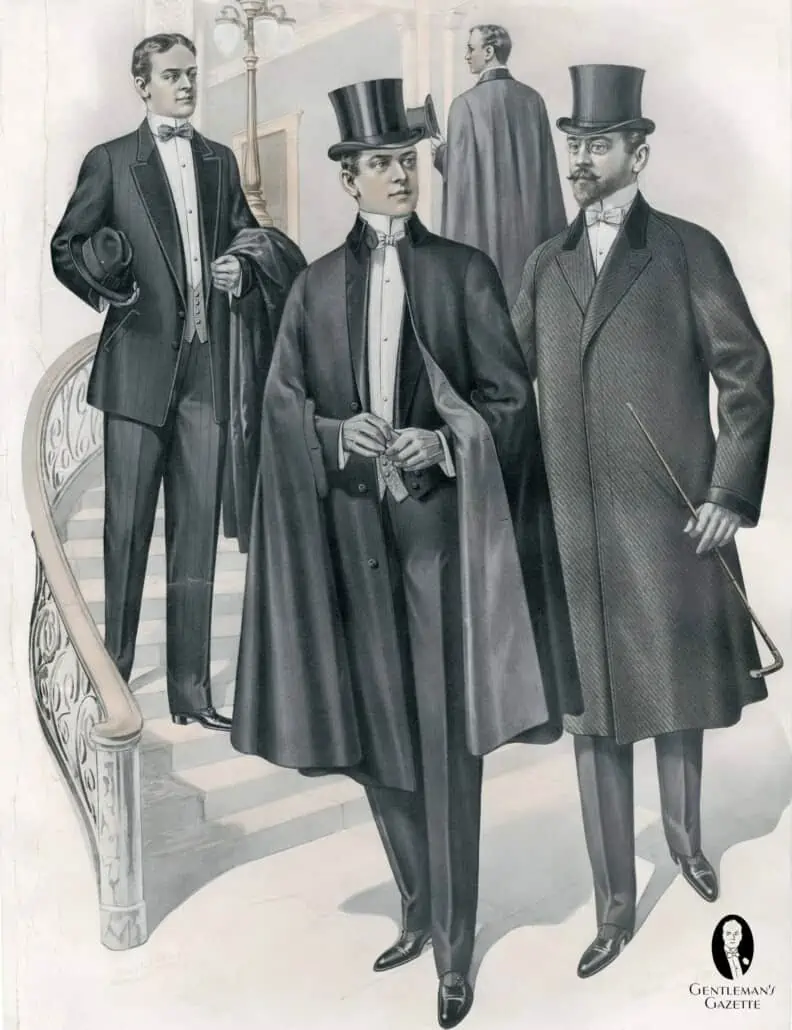
Arguably, etiquette guru Amy Vanderbilt’s advice from 1952 remains relevant today: “The black satin-lined evening cape, an elegant garment, is still seen on gentlemen who take their clothes very seriously and who like to keep alive the niceties of Victorian dress.” In other words, it’s best left to the men who really know how to dress well.
Evening Scarf: Warm & Wonderful
The correct formal scarf is one made of white silk with tassels. You can opt for one in white, black with patterns or in black and white. Since your dinner jacket and or overcoat are dark, it is best to go with some contrast.
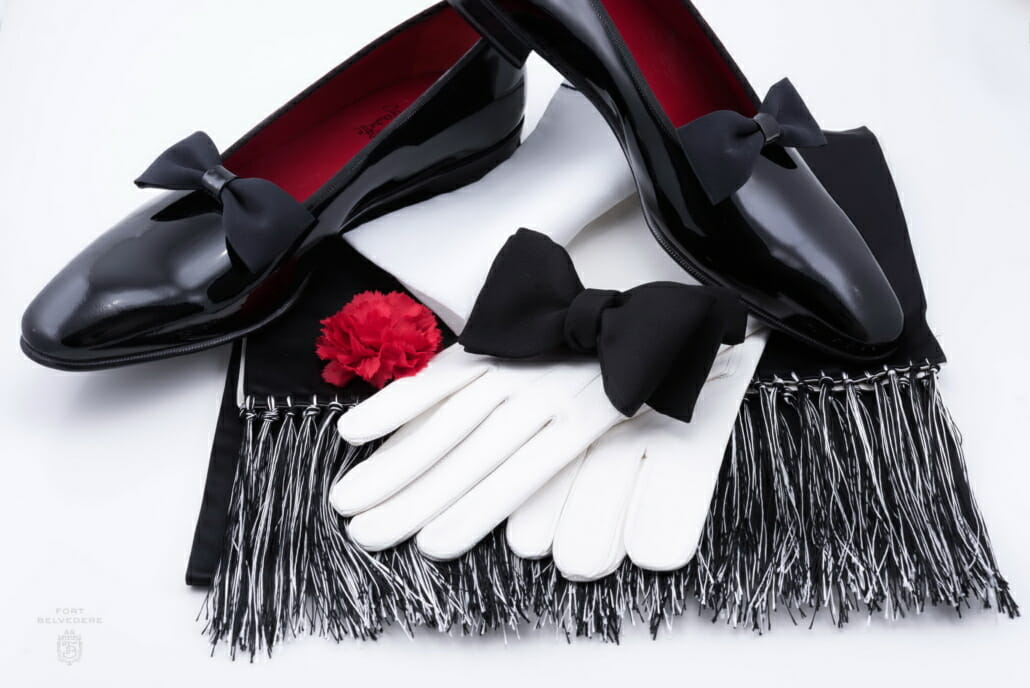
White Evening Gloves
The classic outdoor dress glove for Black Tie is white, off-white gray chamois, buck or lambskin in either button, snap or slip-on style. Dressy black leather gloves are the poor man’s evening glove. Traditionally, gentlemen would never wear black gloves in the evening and hence wearing black gloves cheapens your black tie outfit.
For an evening event, the gloves should fit as neatly as possible and have the least amount of lining necessary. Hence an unlined glove is preferable to a silk lined glove which is better than a cashmere lined glove.
White leather indoor gloves are discussed under Classic Accessories.
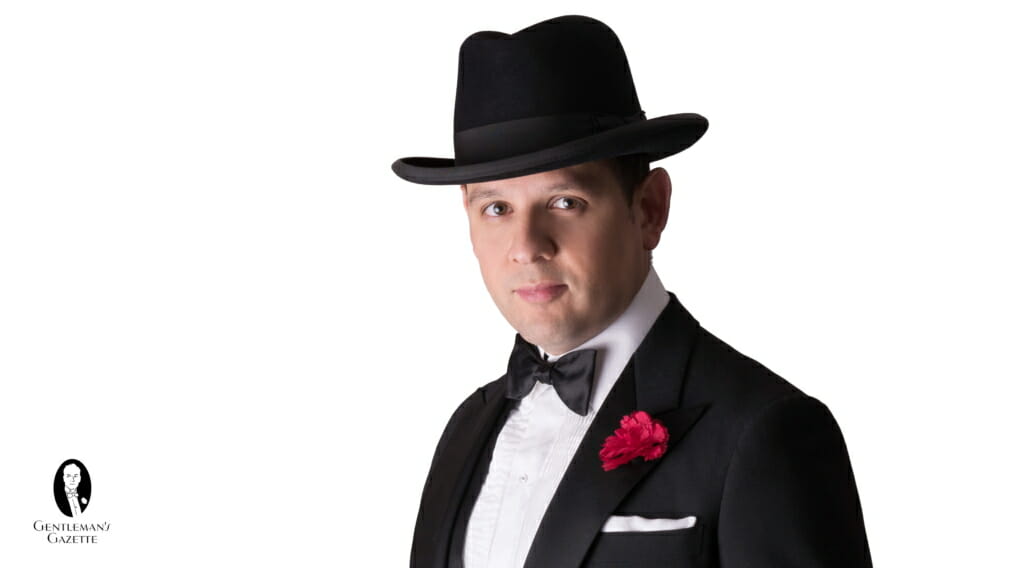
Formal Headwear: Homburg Hat
For men who consider a stylish outfit to be incomplete without accompanying headwear, the black or midnight blue Homburg has been the most accepted hat for the dinner jacket since the 1900s.
Formal Facts: Tuxedo Hat
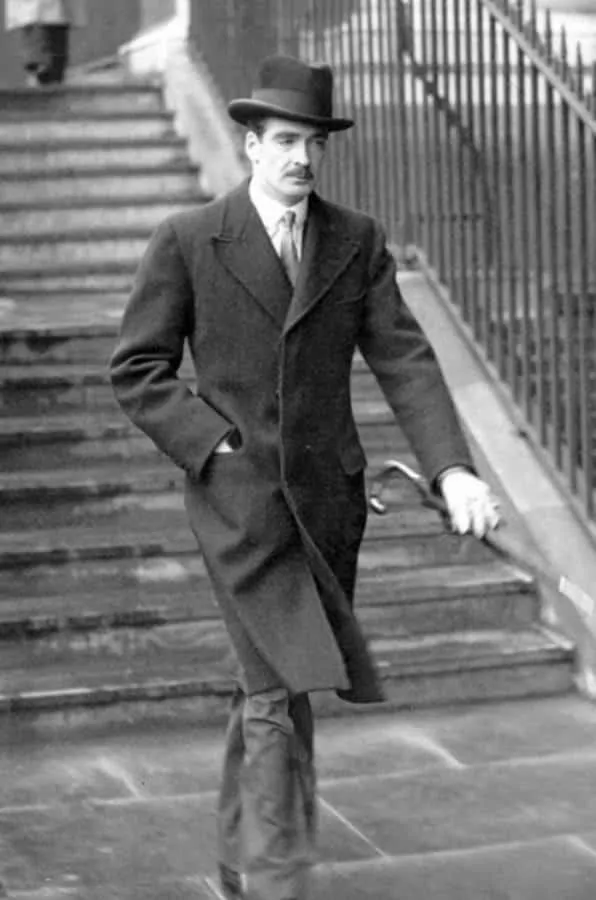
Until the dinner jacket was given a hat of its own in the 1930s (the homburg, pictured), it was usually worn with the more formal top hat or collapsible opera hat borrowed from the tailcoat. Stylistically, it was an odd combination because the tall top hat, harmonizes better with the tails of a morning coat or evening tailcoat, and the shorter dinner jacket is better suited to a shorter hat.
Explore this chapter: 4 Classic Black Tie – The Gold Standard
- 4.1 Classic Tuxedo – Dinner Suits
- 4.2 Classic Evening Waistcoats, Vests, & Cummerbunds
- 4.3 Classic Tuxedo Shirts
- 4.4 Classic Neckwear – The Black Bow Tie
- 4.5 How To Find The Right Black Bow Tie For Your Tux and Face
- 4.6 Classic Tuxedo Shoes – Patent Leather Oxfords & Pumps
- 4.7 Classic Accessories – Cufflinks, Studs & Co
- 4.8 Classic Black Tie Outerwear
- 4.9 Warm-Weather Black Tie – The (Off) White Dinner Jacket
- 4.10 Classic Tuxedo Alternatives – How To Stand Out in Black Tie
- 4.11 Non-Traditional Dinner Jacket Guide
